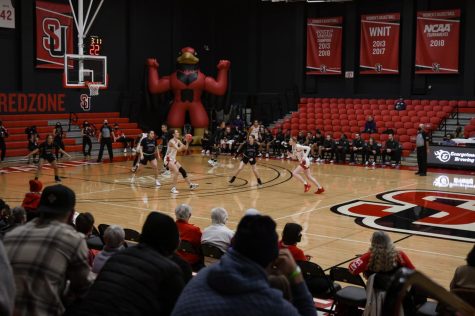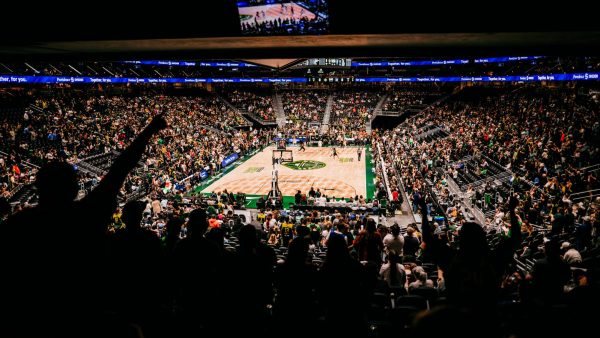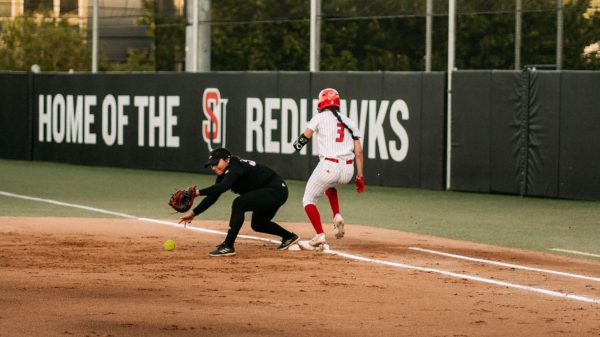New Rules Lead to a More Intense Game for the MLB
No. 44 Julio Rodríguez, outfielder for the Seattle Mariners
This season has seen several changes in the rulebook of Major League Baseball (MLB). Numerous rule changes with the intention of improving the viewing experience have led to a faster, higher-scoring version of America’s pastime.
Overall, three new rules were implemented this season after being tested in the minor leagues.
First, defensive shift limits; this rule means that the defensive team needs a minimum of four players on the infield. The other part of this ruling states that team’s need at least two infielders on either side of the second base. The goal of this rule is to increase players’ batting average, which has seen a decline in the last decade, as well as force defending players to showcase more of their athleticism. A stipulation that comes with this ruling is that the four infield players are not allowed to switch sides depending on the batter’s swing orientation.
Fans such as Henry Timons, a youth baseball player at Driveline, believe the implementation of shift restrictions makes the games fairer for left-handed hitters.
“I like the shift rule,” Timons said. “I think the shift rule can confuse people who are new to baseball. However, I think overall it is better for having advantages even out for both sides.”
The second change to be put in place is increasing the size of the first, second and third bases. The previous size was 15 square inches and has been increased to 18 square inches. This change was made to reduce collisions, especially at first base. Increasing the base size provides the first baseman three more square inches of room to operate without interfering with the runner. The larger bases also provide a slightly increased rate of stolen bases and a lower chance of overshooting the base when sliding.
The last change is the implementation of the pitch clock. The main goal of the pitch clock is to quicken games. The MLB now allows for a maximum time of 30 seconds between batters, 15 seconds between pitches when the bases are empty and 20 seconds when bases are occupied.
So far, in recorded tests, the timer shortens the overall length of the game by around 26 minutes.
If a pitcher does not initiate their pitch by the end of the timer, the batter gets an automatic ball. Batters who fail to reach the batter’s box with eight seconds left on the pitch clock are given an automatic strike. Starting the pitch is not the only way to reset the timer. If a pitcher steps off the rubber to throw to a base to get a runner out, the timer resets. However, a pitcher is only allowed to do this twice per inning.
Seattle Mariners pitcher Andrés Muñoz weighed in on the rule changes.
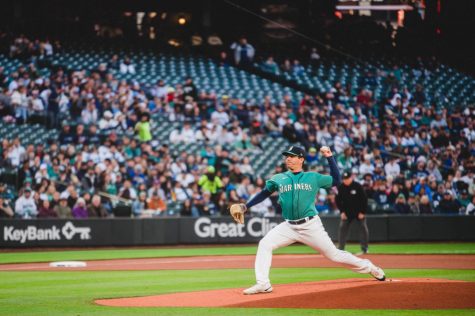
“For some pitchers, it was a little hard to adapt,” Muñoz said. “You have to throw the pitches quicker, but we actually feel it’s pretty good for the game speed.”
With the decreased time in between pitches, the pitcher has to think faster and be ready for the next pitch as soon as the previous play has concluded. Muñoz sees this as the most difficult change.
“You can’t take your time between pitches,” Muñoz said. “Sometimes when you are behind the counter, you need a little bit of time to think and just relax. Right now, the way you have to go and throw the pitch, you don’t have time to think about it.”
Overall, these rules were implemented to enhance the fan experience of watching MLB games. This season has seen higher scoring, shorter games and despite growing pains with the new rules, many viewers, like Mariners fan Nate Mobley, have enjoyed the changes.
“The games are shorter, and for people who are not totally into baseball, it makes it more enjoyable of an experience,” Mobley said. “They do not have to sit through a three-and-a-half-hour game now, and with the pitch clock the game is made more intense.”
How these changes affect the game in the long-run in terms of statistics and team success has yet to be seen. For now, the current changes appear to make for a quicker version of the classic game.






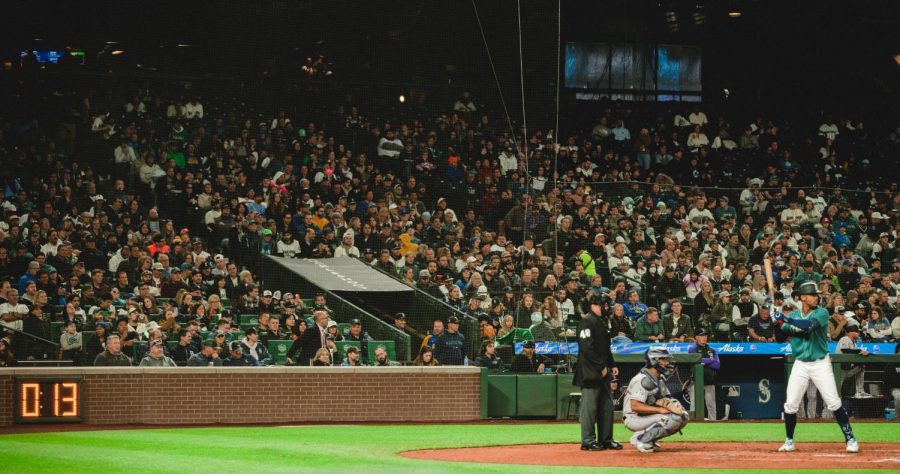
![Josh Gibson Supplants Ty Cobb, Babe Ruth, as Baseball’s Best Hitter [OPINION]](https://seattlespectator.com/wp-content/uploads/2024/05/gettyimages-72075891-600x338.jpg)
